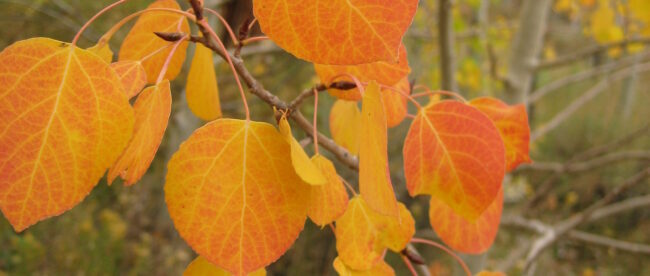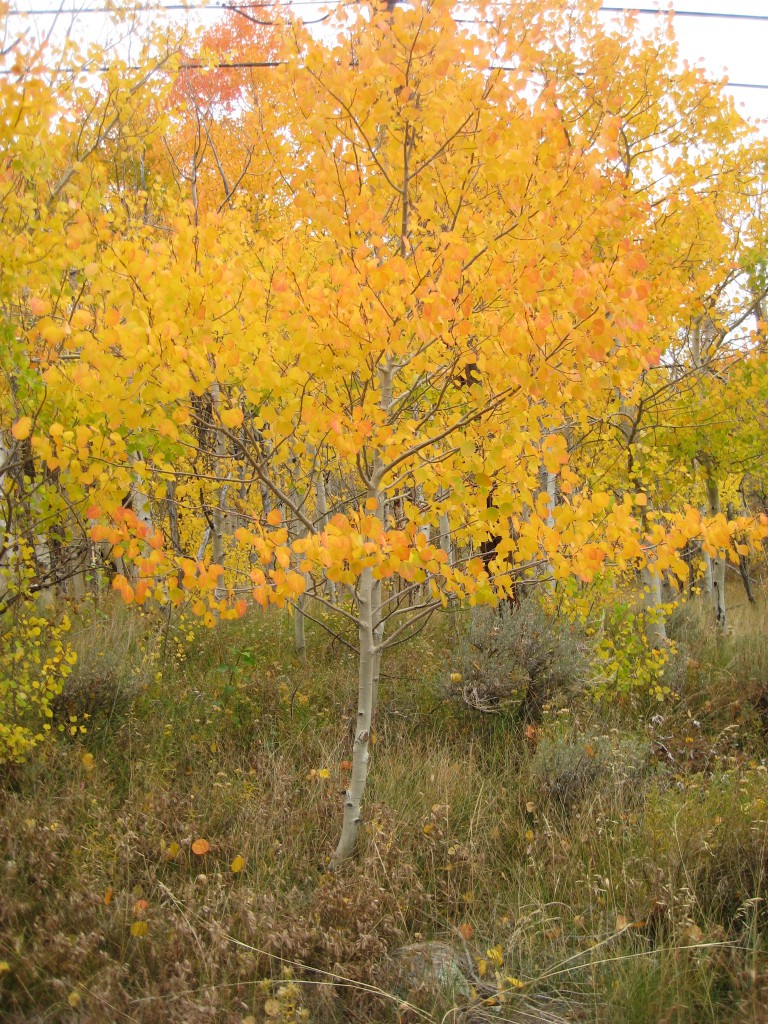Autumn Aspens – Colorado Gold Explained

Autumn Aspens produce Colorado Gold when the leaf-peeping season is upon us. Do you remember how and why a fall leaf changes color? Trying to remember lessons from our 5th grade past is sometimes foggy.
Here is a quick synopsis of why leaves change color so you can have that discussion with a 5th grader (there is far more science involved if you want to research, this is basic).
Leaves are the tree’s food factories, they take water from the ground through their roots, a gas called carbon dioxide from the air, and then use sunlight to turn water and carbon dioxide into oxygen and glucose. Plants use glucose as food for energy and growth. The way plants turn water and carbon dioxide into oxygen and sugar is called photosynthesis. A chemical called chlorophyll helps make photosynthesis happen. Chlorophyll is what gives plants their green color.
The bright reds, oranges, and yellow we see in leaves are made mostly in the fall. In some trees, glucose is trapped in the leaves after photosynthesis stops. Sunlight and the cool nights of autumn cause the leaves to turn this glucose into a color. The green chlorophyll disappears from
the leaves. As the bright green fades away, we begin to see yellow and orange colors. Small amounts of these colors have been in the leaves all along. We just can’t see them in the summer, because they are covered up by the green chlorophyll.
The amount and brilliance of the colors that develop in any particular autumn season are related to weather conditions that occur before and during the time the chlorophyll in the leaves disappears. Temperature and moisture are the main influences. A succession of warm, sunny days and cool, crisp but not freezing nights seems to bring about the most spectacular color displays. During these days, lots of sugars are produced in the leaf but the cool nights and the gradual closing of veins going into the leaf prevent these sugars from moving out. Because carotenoids are always present in leaves, the yellow and gold colors remain fairly constant from year to year.
The amount of moisture in the soil also affects autumn colors. Like the weather, soil moisture varies greatly from year to year. The countless combinations of these two highly variable factors assure that no two autumns can be exactly alike. Late spring or severe summer drought, can delay the onset of fall color by a few weeks. A warm period during fall will also lower the intensity of autumn colors. A warm wet spring, favorable summer weather, and warm sunny fall days with cool nights should produce the most brilliant autumn colors.
No matter the circumstances of wind, weather, rain, and snow, the leaf color in our Colorado Mountain Towns will be brilliant! Autumn Aspens are Colorado Gold so get out there and enjoy!
by Holly Resignolo
Stay in touch with Colorado’s Mountain Town Events: https://mtntownmagazine.com/events-calendar/
*
MTN Town Media Productions | Celebrating the Colorado mountain lifestyle
Copyright 2021 MTN Town Magazine all rights reserved.
Post Sponsored by



